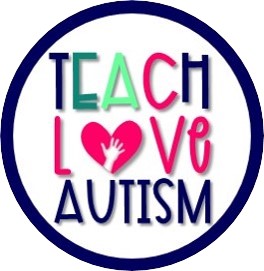Why Are Communication Skills Important in Special Education Classrooms?
Sharing is caring!

As a special education teacher, supporting students with their communication skills is a crucial part of my job. Many of my students receive services from speech and language therapists, but it’s important to remember that communication skills should be practiced and reinforced throughout the day, not just during speech sessions. Here are some tips for supporting students with their speech goals in the classroom:
Collaborate with the speech and language therapist:
Communication is a team effort, so it’s important to work collaboratively with the speech and language therapist to ensure that speech goals are being targeted and practiced throughout the day. Meet regularly with the therapist to discuss progress and strategies to support speech and language development in the classroom. Also, I love inviting speech therapists into my class for lessons where they can provide me ideas on ways to enhance speech for all students in the classroom.
Use visual aids:
Visual aids can be a helpful tool for students with speech goals. Use pictures, symbols, and visual schedules to support communication and understanding. For example, a picture schedule can help a student understand what activities are happening throughout the day and what to expect next. A communication board is a great low-tech item that your speech and language therapist can help you create for lessons to provide students with ways to communicate.
Incorporate communication into daily routines:
Incorporate opportunities for practice with communication skills into daily routines such as morning meetings, transitions, and free play. Encourage students to use their communication skills to ask for help, make requests, and engage in social interactions. Also, find ways to incorporate the use of AAC (augmentative and alternative communication)
Provide positive feedback:
Providing positive feedback can be a powerful tool for supporting speech and communication. When a student uses their communication skills effectively, praise them for their efforts. Positive reinforcement can help to build confidence and encourage students to continue practicing their communication skills.
Model good communication skills:
As a teacher, modeling good communication is an important part of supporting students with their speech and language. Speak clearly and slowly, use simple language, and provide visual supports when necessary. Encourage turn-taking and active listening during classroom discussions and activities. In conclusion, supporting students with speech and language is an important part of being a special education teacher. By collaborating with speech and language therapists, using visual aids, incorporating communication into daily routines, providing positive feedback, and modeling good communication skills, we can help our students develop the skills they need to communicate effectively and succeed in the classroom and beyond.



